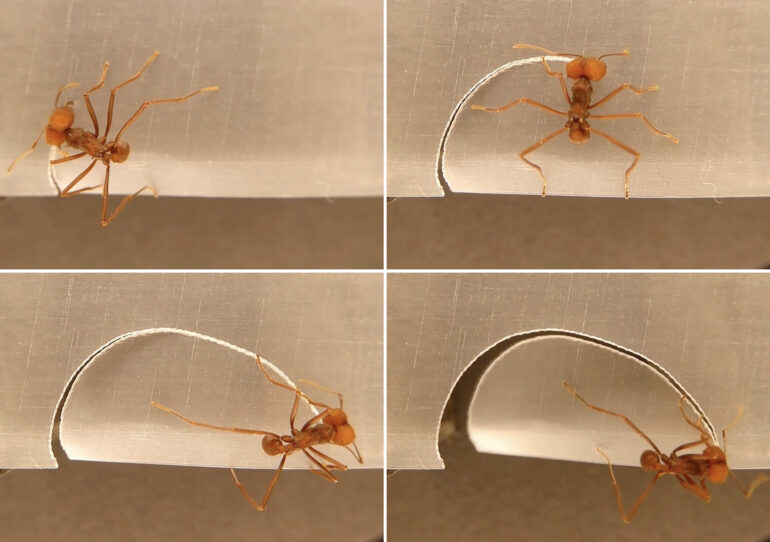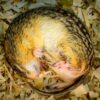They might not be able to leap tall buildings with a single bound, but leaf-cutting ants are insect superheroes, capable of carrying leaf pieces up to six times their body mass to cultivate fungus in their borrows. But how do the charismatic creatures determine the size of the fragments they carve with their mandibles?
Do they use their bodies as a simple ruler, or do they use information about the position of their bodies to adjust how far they cut, adapting to the thickness of a leaf while dismembering it?
Knowing that the insects alter the trajectory of a cut when sculpting Parafilm of different thicknesses, Flavio Roces from the University of Würzburg, Germany, decided to find out how the ants govern the size of the portions they trim. He and his colleagues, Daniela Römer and Rebecca Exl (also from University of Würzburg), have published their discovery in Journal of Experimental Biology that each ant keeps track of the position of the leaf edge by gripping it with their rear legs while pivoting their bodies as they trim to cut perfect leaf portions.
The researchers first needed to understand with how the insects snip out regular leaf fragments. Exl fashioned fake leaves from Parafilm—one layer for thin leaves (0.13 mm), three for thick leaves (0.38 mm)—rubbed them with crushed bramble leaves or rose oil to make them more appealing to the ants and installed them in the foraging area of a lab-based Atta sexdens ant colony. As soon as an ant climbed aboard, Exl



